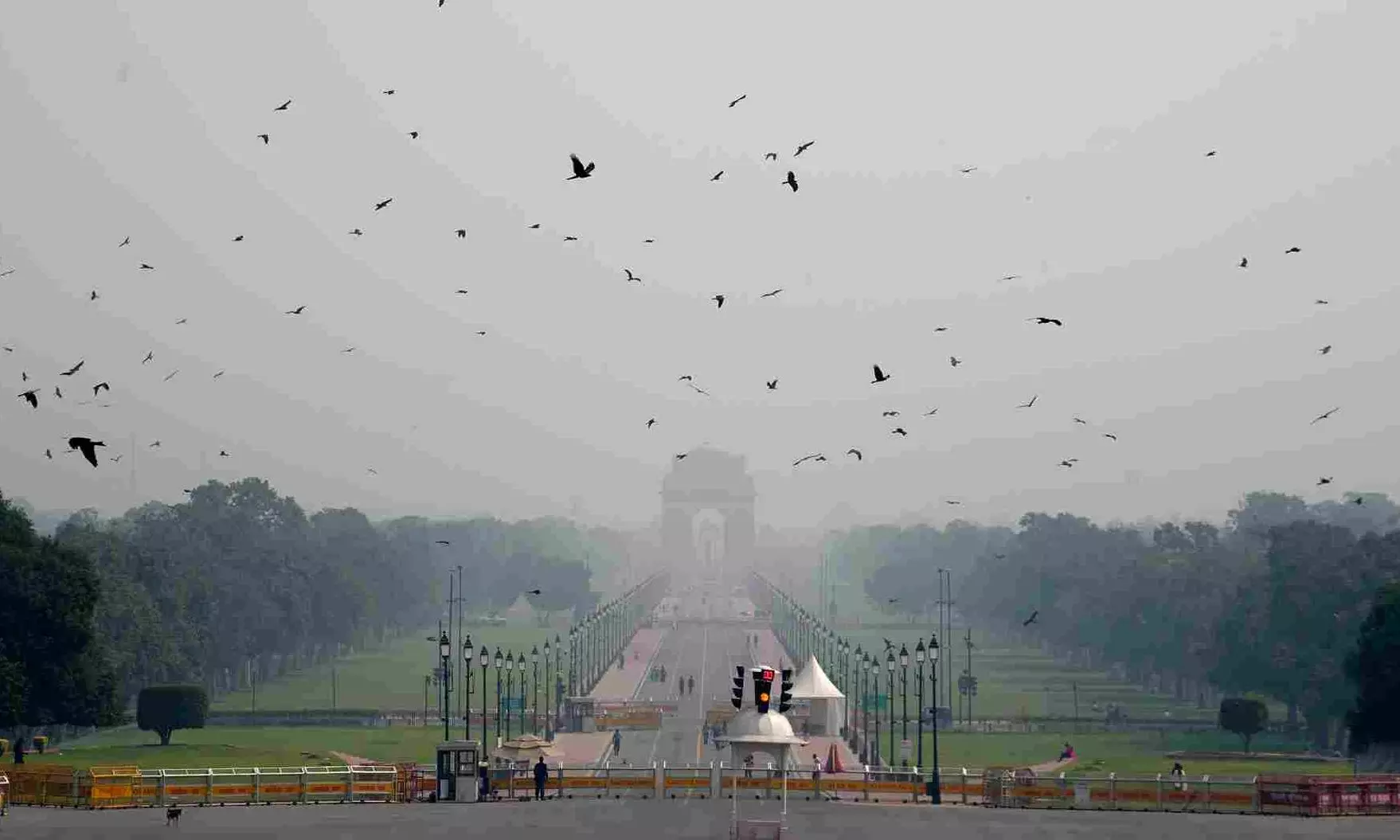
Delhi’s air quality worsens on Diwali amid stubble fire surge in Punjab
The festival of lights once again turned into a festival of smog for Delhi, as haze from vehicles, firecrackers, and farm fires in neighbouring states choked the air

Delhi’s air quality worsened on Diwali, with 34 of the city’s 38 monitoring stations registering pollution levels in the ‘red zone’, indicating ‘very poor’ to ‘severe’ conditions across the national capital.
Also read | Delhi-NCR air quality slips to ‘very poor’; GRAP Stage II invoked
According to official data, the city’s 24-hour average Air Quality Index (AQI) stood at 345 on Monday, up from 326 the previous day, remaining firmly in the ‘very poor’ category.
Pollution levels soar again
According to the SAMEER app developed by the Central Pollution Control Board (CPCB), four monitoring stations were already in the ‘severe’ category with AQI levels above 400 -- Dwarka (417), Ashok Vihar (404), Wazirpur (423) and Anand Vihar (404).
Around 30 monitoring stations reported ‘very poor’ air, with AQI levels above 300. In the afternoon, 31 out of 38 stations recorded 'very poor' air quality, while three stations fell under the 'severe' zone, data showed.
The air quality is expected to slip into the ‘severe’ category more widely on Tuesday and Wednesday.
Transport emerges major polluter
Transport emissions contributed 15.6 per cent to Delhi's air pollution on Monday, while other factors, including industries, accounted for 23.3 per cent, data from the Decision Support System (DSS) showed.
On Sunday, the Commission for Air Quality Management (CAQM) invoked Stage II of the Graded Response Action Plan (GRAP) across Delhi-NCR.
Map showing air quality levels across Delhi on Diwali day.
The move followed a review of the sub-committee on GRAP on Saturday and forecasts by the India Meteorological Department (IMD) and the Indian Institute of Tropical Meteorology (IITM).
Also read | Delhi’s air quality takes sharp dive on Diwali afternoon
The CPCB categorises AQI between 0 and 50 as ‘good’, 51 and 100 ‘satisfactory’, 101 and 200 ‘moderate’, 201 and 300 ‘poor’, 301 and 400 ‘very poor’, and 401 and 500 ‘severe’.
On October 15, the Supreme Court allowed the sale and bursting of green firecrackers in Delhi-NCR between 6 am and 7 pm and again from 8 pm to 10 pm on Diwali eve and the day of the festival.
Stubble fires surge again
Meanwhile, the number of stubble burning incidents in Punjab has reached 308, with Tarn Taran and Amritsar districts accounting for the majority of such cases, according to the Punjab Pollution Control Board (PPCB) data.
Stubble burning in Punjab and Haryana is often blamed for the rise in air pollution in Delhi-NCR.
At 113, Tarn Taran district has witnessed maximum stubble burning cases in Punjab so far, followed by Amritsar with 104 cases, as many farmers continue to burn crop residue, ignoring the state government's appeals to stop the practice.
As the window for the Rabi crop, wheat, is very short after the paddy harvest in October and November, many farmers set their fields on fire to clear off the residue for sowing the next crop.
Punjab saw 308 fire incidents between September 15 and October 19, as per the PPCB data. Among other districts, 16 stubble burning cases have been reported in Ferozepur, 15 in Patiala and seven in Gurdaspur. Indicating a surge in the number of farm fires over the past week, stubble burning incidents reached 308 from 116 on October 11.
Farm fire offenders penalised
A fine of over Rs 6.5 lakh in the form of environmental compensation has been imposed in 132 cases so far. Of the total fine, over Rs 4.70 lakh has been recovered.
Also read | Delhi gasps for breath as AQI soars beyond 426 ahead of Diwali
Additionally, 147 FIRs, which include 61 in Tarn Taran and 37 in Amritsar, have been registered over stubble burning incidents. Cases have been registered under Section 223 (disobedience of orders promulgated by a public servant) of the Bharatiya Nyaya Sanhita (BNS).
While the state government has launched a campaign to highlight the ill-effects of stubble burning and benefits of crop residue management machinery, it is still practised by many farmers to clear crop residue.
Punjab saw 10,909 farm fires in 2024 as compared to 36,663 in 2023, registering a 70 per cent decrease in farm fires.
The state had recorded 49,922 fire events in 2022, 71,304 in 2021, 76,590 in 2020, 55,210 in 2019 and 50,590 in 2018 with many districts including Sangrur, Mansa, Bathinda and Amritsar witnessing large number of stubble burning incidents.
(With agency inputs)

